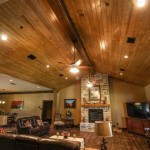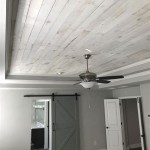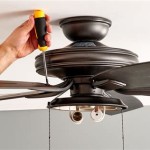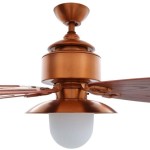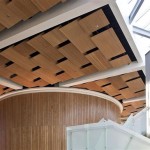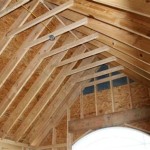Ceiling Fan Installation Cost: A Comprehensive Guide
Ceiling fans are a valuable addition to any home, providing both aesthetic appeal and functional benefits. They circulate air, contributing to energy efficiency by reducing the strain on heating and cooling systems. Understanding the costs associated with ceiling fan installation is crucial for homeowners planning to upgrade their living spaces. This article provides a detailed breakdown of the factors influencing installation expenses, offering a comprehensive guide for budgeting and decision-making.
The overall cost of installing a ceiling fan can vary considerably based on several key elements. These include the type of fan being installed, the existing electrical infrastructure in the home, any required modifications to the ceiling or wiring, and the labor costs charged by the electrician or installer. A simple replacement of an existing ceiling fan is generally less expensive than installing a new fan where no fixture previously existed. The location of the fan, such as on a high or sloped ceiling, can also impact the installation price.
Key Factors Influencing Ceiling Fan Installation Costs
Several factors contribute to the final cost of ceiling fan installation. These factors can be broadly categorized as fan-related costs, electrical work costs, and labor costs. Evaluating each of these components individually helps homeowners gain a clearer understanding of the overall expense.
Fan-Related Costs: The price of the ceiling fan itself is a significant factor. Ceiling fans range in price from basic models costing under $100 to high-end designer fans that can exceed $1,000. Factors influencing fan price include the size of the fan (measured in blade span), the motor type (AC or DC), the number of blades, included features such as remote control or integrated lighting, and the brand reputation. An energy-efficient DC motor fan will usually cost more upfront but can save money on energy bills over its lifespan. Choosing a fan appropriate for the room size is crucial; a fan that is too small will not effectively circulate air, while a fan that is too large may be visually overwhelming and consume unnecessary energy. Fans designed for outdoor or damp locations are typically more expensive due to their weather-resistant construction.
Electrical Work Costs: The complexity of the electrical work required can significantly impact the installation cost. If there is an existing electrical box and wiring in place that is suitable for supporting a ceiling fan, the cost will be lower. However, if the existing wiring is inadequate or if there is no electrical box present, additional wiring and a support box will need to be installed. This may involve running new wires from the circuit breaker, which can be a more involved and expensive process. Homes with older wiring may require upgrades to meet current electrical codes, further increasing the cost. If a separate switch is desired to control the fan and light independently, additional wiring and a switch box will need to be installed. Some installations may require a dedicated circuit to prevent overloading the existing electrical system.
Labor Costs: Labor costs are a substantial portion of the overall installation expense. Electricians typically charge an hourly rate or a flat fee for ceiling fan installation. Hourly rates can vary depending on location and the electrician's experience. Flat fees are often based on the complexity of the installation. It is advisable to obtain multiple quotes from different electricians to compare prices and services. Factors that can influence labor costs include the height and accessibility of the ceiling, the presence of obstacles such as light fixtures or crown molding, and the need for any specialized tools or equipment. Installations on sloped ceilings often require additional time and effort, increasing the labor cost. Complex installations involving extensive wiring or structural modifications will also result in higher labor charges.
The type of electrician hired can also impact the labor cost. A licensed electrician will generally charge more than a handyman or general contractor. However, a licensed electrician is more likely to have the necessary skills and experience to ensure a safe and code-compliant installation. Using a licensed electrician is also crucial for obtaining necessary permits and inspections, which can protect homeowners from liability in the event of electrical problems or safety hazards.
Detailed Cost Breakdown of Typical Installations
To provide a more concrete understanding, let's examine the typical cost breakdown for several common ceiling fan installation scenarios. These scenarios assume a standard residential setting.
Scenario 1: Replacing an Existing Ceiling Fan: This is the simplest and least expensive scenario. Assuming the existing electrical box and wiring are in good condition and suitable for the new fan, the primary costs will be the price of the new fan and the electrician's labor. The fan itself may range from $50 to $500+, depending on the features and quality. Labor costs for a straightforward replacement typically range from $75 to $150. Therefore, the total cost for this scenario could be between $125 and $650+.
Scenario 2: Installing a New Fan with Existing Wiring: This scenario involves installing a ceiling fan in a location where there is an existing electrical box and wiring, but no fan is currently present. This might be in a room that previously had only a light fixture. The electrician will need to assess the existing wiring to ensure it is suitable for a ceiling fan and determine if a fan-rated electrical box is present. If the existing box is not fan-rated, it will need to be replaced. The cost of the fan will be the same as in Scenario 1. Labor costs will be slightly higher, ranging from $100 to $200, due to the additional work of assessing the wiring and potentially replacing the electrical box. The total cost for this scenario could be between $150 and $700+.
Scenario 3: Installing a New Fan Requiring New Wiring: This is the most complex and expensive scenario. It involves installing a ceiling fan in a location where there is no existing electrical box or wiring. This requires running new wires from the circuit breaker to the fan location, installing a fan-rated electrical box, and potentially installing a new switch. The cost of the fan will be the same as in the previous scenarios. Labor costs will be significantly higher, ranging from $200 to $500 or more, depending on the complexity of the wiring and the accessibility of the ceiling. Additional costs may include the cost of the wiring itself and any necessary permits. The total cost for this scenario could be between $250 and $1000+.
Additional Cost Considerations: Beyond these basic scenarios, several other factors can influence the installation cost. These include:
- Ceiling Height: High ceilings may require the use of scaffolding or specialized equipment, increasing labor costs.
- Sloped Ceilings: Installing a fan on a sloped ceiling requires a special adapter and can be more time-consuming, increasing labor costs.
- Remote Control Installation: Installing a fan with remote control functionality may require additional wiring and programming, increasing labor costs.
- Permits and Inspections: Depending on local regulations, a permit may be required for ceiling fan installation. The cost of the permit and inspection can add to the overall expense.
- Drywall Repair: If running new wiring requires cutting into the drywall, the cost of repairing and painting the drywall should be factored in.
Tips for Minimizing Ceiling Fan Installation Costs
While ceiling fan installation can be a significant expense, there are several steps homeowners can take to minimize costs without compromising safety or quality.
Obtain Multiple Quotes: Get quotes from at least three different electricians or installers to compare prices and services. Be sure to provide each contractor with the same information about the project to ensure accurate comparisons.
Choose the Right Fan: Select a fan that is appropriately sized for the room and has the features you need, without overspending on unnecessary bells and whistles. Consider energy-efficient models with DC motors to save on long-term energy costs.
Prepare the Area: Clear the area around the installation site to provide the electrician with easy access. This can save time and reduce labor costs.
Consider DIY (with Caution): If you have extensive electrical experience and are comfortable working with wiring, you may be able to install the ceiling fan yourself. However, it is crucial to prioritize safety and follow all applicable electrical codes. If you are unsure about any aspect of the installation, it is best to hire a qualified electrician.
Schedule Strategically: Electricians may offer lower rates during off-peak seasons or weekdays. Inquire about potential discounts for scheduling the installation at a less busy time.
Check for Rebates: Some utility companies offer rebates for installing energy-efficient ceiling fans. Check with your local utility company for available incentives.
Bundle Services: If you have other electrical work that needs to be done, consider bundling it with the ceiling fan installation to potentially negotiate a lower price.
In conclusion, understanding the various factors that influence ceiling fan installation costs, obtaining multiple quotes, and taking steps to minimize expenses can help homeowners make informed decisions and stay within budget. Prioritizing safety and hiring a qualified electrician when necessary are essential to ensuring a successful and code-compliant installation.

What Does It Cost To Install A Ceiling Fan Bankrate

Ceiling Fan Installation Cost In 2025 All You Need To Know

How To Install Ceiling Fans In Singapore

How Much Does It Cost To Install A Ceiling Fan

Things To Consider Before Getting A Ceiling Fan Installation Done Singapore

How Much Does It Cost To Install A Ceiling Fan Guide 2025

A Step By Guide To Estimating The Cost Of Installing Ceiling Fans And Exhaust Estimate Florida Consulting

A Step By Guide To Estimating The Cost Of Installing Ceiling Fans And Exhaust Estimate Florida Consulting

How Much Does An Industrial Fan Cost Big Ass Fans

How Much Does It Cost To Install A Ceiling Fan The Top 10 Benefits Dunbar S Electric
Related Posts

